New developments are changing the way that vehicle batteries are designed and manufactured, as our stored energy needs have changed alongside our transportation needs.
Today’s car battery, truck battery, and van battery may be required to power a myriad of new gadgets, like GPS, TV screens, or complicated audio systems.
Battery-operated cars and hybrid vehicles are beginning to fill the roads, bringing about even more need for excellence in car battery technology.
Today’s car batteries are stronger, produce more power, and boast a longer life than their older counterparts.
We are here to help you choose the best car battery to satisfy all your demands and last the longest.
Throughout our extensive research, we have consulted with professional mechanics, experienced salesman, and independent users about their experience with certain brands and batteries.
Because our only goal is to bring independent and expert advice without pushing particular brands in front like some salesmen in shops do just because they have a bigger benefit.
So sit comfortably and check out the top car batteries on the market brought to you by today’s industry leaders!
The Best Car Batteries (Detailed Reviews)
1. Odyssey 65-PC1750T Battery| Best AGM Car Battery
The real diverse need for performance of today’s batteries has led Odyssey to come up with a solution that meets all the requirements of modern cars, trucks, hobby cars, and the gadgets inside them.
With a 950 CCA (Cold Cranking Amps) and 145 Reserve Capacity Minutes, the Odyssey 65-PC1750T Battery is a real monster, and to be honest, it is really difficult nowadays to find something even close to that power on the market.
Especially appropriate for big diesel engines that need a lot of cranking power to power up. Freezing winters with low temperatures or long brakes inside the garage will not impact or trouble the Odyssey 65-PC1750T Battery to get you moving for the next trip.
The AGM design makes it maintenance-free and ensures there are no spills over the parts under the hood of the vehicle.
Looking at the price, well, the Odyssey 65-PC1750T Battery is not the cheapest but here you really pay for quality.
And believe us, in the long term it will end up to be the cheaper option than other alternatives (which are rare) because as the manufacturer claims, the battery is expected to have 3 to 10 years of service life and 70% longer cycle life than the conventional lead-acid batteries.
To summarize we would say that the Odyssey 65-PC1750T Battery is probably the best option on the market currently for vehicles that need a lot of cranking power to start.
The AGM design, high vibration resistance, and much faster recharge efficiency are only some of the impressive features this battery is equipped with.
Key Product Details ✅
- 12V, 950 CCA, 145 RCM, 65 Ah
- 4 – year full replacement warranty
- Enormous starting power, fast recovery & impressive deep cycling capability
- 2x the overall power and 3x the life of conventional lead-acid batteries
- Long breaks in the garage and really low temperatures, not an issue
2. Optima REDTOP 34/78 | Longest Lasting Car Battery
Optima is probably the most well-known battery brand in the last couple of years. Due to the innovative technology and features, we can comfortably say that they have produced a one of a kind REDTOP line designed for immediate starting power and longer life. But let’s go into more details below.
The unique design of Optima’s “SPIRALCELL” offers the greatest technology to provide a healthy and clean electrical source that greatly outperforms some of the traditional ones used in other rechargeable batteries.
With Optima, you can rely on longer battery life for your vehicle.
The high-performance AGM battery OPTIMA REDTOP is known to have the greatest starting power in the market, designed to deliver a powerful 5-second pulse for a reliable start of the vehicle every time even in bad, cold weather.
REDTOP® also outperforms traditional batteries in applications requiring high starting power and longer life.
With unmatched power and exceptional resistance to the most common causes of battery damage, OPTIMA REDTOP® is the perfect battery for trucks, SUVs, tuning, and everyday cars, and other applications that require a powerful starter battery.
The Optima REDTOP 34/78 features a dual (SAE/GM) post type with 800 cold-cranking amps and 50 Ah C20 capacity.
It is also designed to recharge faster and is basically maintenance-free due to AGM technology.
Key Product Details ✅
- 12V, 800 CCA, 50 Ah
- Up to three times longer life than the standard batteries
- Higher power during the first 1, 2, 5, and 10 seconds of starting compared to conventional lead-acid batteries
- A consistent quality level guaranteeing the same level of battery quality even after complete flattering
- 15 times greater vibration resistance than other batteries
- Easy installation in almost every position
- 36 – month warranty
3. DieHard Platinum AGM Battery | Best Car Battery For Cold Weather
What modern vehicles need today is basically huge cranking power and deep cycle performance. While most of the batteries on the market are strong in only one of these features, DieHard Platinum AGM series have them both!
It is believed by the experts that DieHard is one of the best car batteries nowadays on the market.
Their initial goal was to make a battery that will outlive the vehicle they are used in. Well, we can not confirm that but we encourage you to give them a try.
The impressive power and performance of the DieHard Platinum AGM Battery come from the Stamped Grid Design providing probably the best power-per-pound offered on the market.
The improved technology offers much higher vibration resistance which in the long term prolongs the lifespan of the battery more than two times (compared to the conventional lead-acid batteries).
A revolutionary vibration resistance system help in absorbing the electrolytes which extend the battery’s life even more.
All in all, the DieHard Platinum AGM Battery is one of the most reliable batteries today with a long lifespan and impressive 850 CCA suitable to be used even in the coldest regions and days.
Key Product Details ✅
- 12V, 850 CCA, 80Ah, 140 minutes RC
- Up to two times longer life than conventional batteries
- Made in the U.S.A
- 36 – month replaceable warranty
- Non-spillable and maintenance-free
- Stamped Grid Technology provides 70% better electrical flow
4. Optima Batteries YellowTop D35 | Best Deep-Cycle Car Battery
Another Optima battery on our list and this time it is the Optima YellowTop D35. But before we continue with the main features, let’s briefly get it clear what is the main difference between Optima RedTop and Optima YellowTop.
The Optima RedTop line offer batteries with the best starting power and CCA (cold cranking amps). They are the right choice for drivers who need a strong starting burst of power with vehicles that are not equipped with a massive amount of battery demanding gadgets.
The YellowTop, on the other hand, is the choice for users with vehicles that are equipped with a lot of accessories consuming battery power and draining the battery.
And because it is a deep-cycle battery, it is recommended for drivers whose cars are not used for long periods of time because of the feature that it can survive more than 300 discharge-recharge cycles.
Getting back to the YellowTop D35 itself. With its 620 CCA and impressive deep-cycle capabilities, it is a true dual-purpose battery.
If you have a Porsche, muscle car, or another seasonal vehicle that is not being used during the long winters, then this is the perfect choice for you because of the low discharge rate of the YellowTop D35.
Maintenance-free with a unique spiral cell design and up to three times longer life makes the Optima YellowTop 35 stands out from the crowd.
The spill-proof design makes the YellowTop 35 mountable in virtually any position and combined with an impressive 15 times vibration resistance it is a battery perfect to be used in vehicles going off the road.
Key Product Details ✅
- 12V, 620 CCA, 770 A Cranking Amperage
- Dual purpose: high CCA and deep-cycle
- 15x more vibration resistant and 3x longer life
- 100-minutes RC (Reverse capacity)
- 15 times more vibration-resistant than normal batteries
5. Odyssey PC680 |Best Budget Car Battery
Another great AGM battery this time from Odyssey. Odyssey is a brand of EnerSys which is still the largest industrial and commercial battery manufacturer in the world. And there is a reason behind that.
If you are looking for the most reliable budget automotive battery on the market, the Odyssey PC680 Battery from their Extreme series is probably the best option for you.
The Extreme series from Odyssey offer twice the overall power and up to three times more the service life compared to conventional batteries which as stated by the manufacturer could be between three and ten years depending on the way of exploitation.
The Odyssey PC680 itself is made from flat, pure lead plates which gives the opportunity to fit more of them in the battery resulting in more power and durability.
They can handle 400 charges/discharge cycles up to 80% depth of discharge. Another impressive feature is the faster recharge efficiency which is probably one of the best in the sealed lead battery market. An Odyssey PC680 battery can be fully recharged to 100% in about 4 to 6 hours.
Going into more details we need to mention the 170 CCA and give you a tip which you won’t find in any other review of this product.
What you need to keep in mind when buying a battery with 170 CCA is the weather in your area and mainly the cold winter days.
A battery with 170 CCA like the Odyssey PC680 would be ideal to use in regions where the temperatures do not fall under 30 to 45 degrees °F.
Except for the standard cars, the compact design of PC680 offers a wide range of applications like in supercharged touring cars where the space under the hood is limited, motorbikes, ATVs, jet skis, experimental planes, etc.
The extreme temperature tolerance, vibration resistance, and non-spillable design are also features that make the Odyssey PC680 appropriate for almost any kind of vehicle.
To sum it up in a few words, PC680 is a cheap battery with a wide range of applicability from regular cars to mini planes. It has a really long life and durability and can be mounted in virtually any position due to the non-spill design.
Key Product Details ✅
- 12V, 170 CCA, 16 Ah
- Made in the U.S.A
- Faster recharge efficiency
- Compact design and mountable in virtually any position
- 520 cranking amps for 5 seconds
- reserve capacity is great for a new battery
6. ACDelco ACDB24R Advantage | Best Car Battery For Toyota Prius
Like every normal automobile, the Toyota Prius has a 12V battery which normally works fine for about 5 to 6 years.
One option to replace it is to call a dealership and ask for a quote for an OEM battery which would be around $220 – $300.
The other option that we recommend and have been using in our Priuses is the ACDelco ACDB24R Advantage Battery.
It is considerably cheaper and performs just perfect (might be even better than the OEM battery) on all the Prius cars years 2002 and newer.
It is a direct replacement so you won’t have to do any kind of modifications. Even the vent hole is on the correct side of the battery and the Prius venting attachment can be used from the old battery.
The ACDelco ACDB24R Advantage is an AGM (Absorbed Glass Mat) design battery so it is basically maintenance-free and there is no need for adding any distilled water.
Cold-cranking amps (CCA) – 325 with 70 RC Ah. Now, the CCA might look like a small number compared to the batteries we have reviewed above but Prius cars do not need high CCAs.
This is because the 12V battery is not used to power up the engine but only to run electronics like lights, radio, etc.
To sum it up, the ACDelco ACDB24R Advantage Battery is the perfect replacement battery for Toyota Prius 2002 and newer models at a considerably cheaper price.
It works perfectly and is a direct replacement which means there is no need for any modifications in order to install it.
Key Product Details ✅
- 12V, 325 CCA, 75 RC, 45 Ah
- Much cheaper than the OEM battery
- Direct replacement of a malfunctioning new battery
- AGM design – maintenance-free
- 24 Month free replacement/ limited warranty
- Improved battery life
7. XS Power D6500 | Best Car Battery For Car Audio
On your attention is another beast on the market. Probably the one and only product when it comes to auto audio batteries.
Two of the main features that make the XS Power D6500 an outstanding battery is its power and functionality.
Talking about the first, the XS Power D6500 has 1070 CA with 75 Ah and a Reverse Capacity (RC) of 150 minutes.
It features an AGM design with high vibration resistance and is ideal for auto audio systems with 3000W/4000W.
At first sight, the XS Power D6500 might look pricey but you will not regret it after seeing the performance of your car and sound system. Like some people said, “This is the best investment I have made in my vehicle”.
With the XS Power D6500, your car gets better starting power, improves the quality of the sound and you can forget about lights dimming when this hard bass is hitting.
The XS Power D6500 can be used as an additional battery for your aftermarket sound system or as a direct replacement to the standard battery of the car.
Key Product Details ✅
- 12V, 1070 CA, 150 min RC, 75 Ah, 3900 Max Amps
- AGM maintenance-free and spill-proof design
- Mountable in virtually any position
- Can be used as an additional battery for an audio system or as a replacement for the standard one
- 36-month warranty
8. ACDelco 94RAGM Battery | Best Car Battery Brand
Snow, water, or asphalt? If there is a vehicle that can run on all those terrains, this is certainly a machine powered by an ACDelco battery.
Sitting under their parent organization – General Motors (GM), ACDelco batteries have a well-deserved reputation for long life expectancy, improved overall performance, and great warranty for a new battery.
Speaking about the last, the ACDelco 94RAGM comes with a three-year free replacement limited warranty which speaks for the reliability of the battery itself.
The revolutionary AGM (Absorbed Glass Matt) technology ensures maintenance-free usage, without any spills, leaks, or need of adding distilled water and makes it one of the best car batteries.
The 94RAGM’s AGM technology is especially appropriate for automobiles with an automatic Start/Stop system. And to back this information up we’ll mention that all the GM automobiles with Start/Stop feature leave the factory with the AGM batteries.
Extreme weather conditions – too hot or freezingly cold are not a big deal for the ACDelco with its impressive 850 CCA (cold cranking amps). You shouldn’t worry anymore about those cold mornings when you have to be at work on time, your vehicle will be there for you.
Due to a maintained pressure on the plates, the ACDelco 94RAGM is known to have a longer life when used for the regular needs of automobiles. This is because the chance to lose active mass from the grid is significantly reduced.
Another great feature that helps the battery to stay cool and extend life is the Robust Envelope Separator with a puncture-resistant back which allows the acid circulation to increase and also reduces shorts.
In short, we’ll say that the ACDelco 94RAGM is a reliable and long-lasting battery at a very reasonable price for the product you get.
Key Product Details ✅
- Maintenance-free AGM technology
- 12V, 850 CCA, 80 Ah
- Vent cap design that prevents the leakage of acids
- Longer life expectancy
- High-density plate oxide ensures high power-per-pound and reliable “high cycling”
Buyer’s Guide About The Best Car Battery
Before you do anything, make sure you dispose of your old battery safely and responsibly, as they contain sulphuric acid, which poses a threat to the environment and can also pollute water or burn skin and eyes.
Also, batteries contain heavy metals like lead, mercury, nickel, and cadmium, which can contaminate the environment.
What Kind Of Car Battery Do I Need?
There are a few major factors you must keep in mind while picking out a battery for your vehicle. We take all those into consideration when writing our car battery reviews.
1. Size
The first of these factors is the size. Those are the exact dimensions of the battery – length, height, and width. Usually, they come in group sizes to fit battery trays of most cars.
However, it’s very important the battery fit tightly and securely. The easiest way to know your car’s battery group size is to check the owner’s manual.
Purchasing an inappropriately-sized battery will not only be a waste of your money and time but it might also cause damage to your car.
2. Brand
For any product, the brand is an important consideration. It’s the trademark given to a product (for example, Optima Batteries).
Many people suggest that it’s best to go for the battery brand specified in the owner’s manual of your car. But OEM batteries are usually too expensive and that is why you can go through the specification requirements in the owner’s manual and then choose a replacement battery appropriate for your car.
Make sure you’re not tempted into buying the cheapest brand as it could cost you more in the long run than what you gain in the short run as they can be full of flaws or just perform poorly.
3. Reverse Capacity (RC)
Reserve Capacity Rating is another important attribute. It refers to the amount of time the battery can supply continuous minimum voltage required to run the car should the alternator or a fan belt fail.
RC Rating is measured in minutes. However, it might not be printed on the battery label, so check the documentation or ask the storekeeper to find out the true RC rating of the battery.
The longer the RC of the battery, the better it is. It’s an attribute that could save you the inconvenience of getting stranded on a lonely country road somewhere, so consider it as part of your car’s emergency kit.
Make sure you choose a battery with the exact RC rating that your vehicle can handle.
4. Manufacturing date
Make sure you look for the manufacturing date of the battery as the age of a battery gives you a good idea about how long it should be able to perform.
If a battery is less than six months old, it’s considered ‘fresh’. Most manufacturing date codes are stamped on the battery case or label.
5. Cold Cranking Amps (CCA)
Another factor to consider is the Cold-Cranking Amps (CCA), which gauge the battery’s ability to start the car even during extremely cold weather as the car’s oil thickens, chemical reactions slow down which make it harder for the car to ignite.
CCA refers to the number of amps the battery will be able to support for up to 30 seconds at 0-degree °F temperature while maintaining the voltage above 7.2 volts.
So, if it gets really cold where you live, it’s wise to choose a battery with a high CCA number. Obviously, if you live in a warm or tropical climate, CCA isn’t that important of a feature for you to consider.
6. Warranty
Like any other product you would buy, the warranty is an important factor to be taken into consideration and a good starting point to narrowing your choices.
What we often suggest people is to look at it as a price per year point of view. Logically, a good battery will have a longer warranty. Warranty is a factor that a lot of car battery review sites skip.
Non-Prorated Warranty
The car batteries have two main types of warranties. The first and the most common is the free replacement warranty which is also known as non – prorated. This means that if your battery fails during the warranty period, let’s say it’s 2 years, the manufacturer will replace your battery at no cost.
Prorated Warranty
The second one is the so-called prorated. Let’s say the battery has a 2-year warranty and it fails in year 1. Then you will be reimbursed for the remaining one year of the warranty.
Prorated warranty means that the manufacturer reimburses you for the remaining part of the battery warranty after its failure.
Another example – a battery with 4 years prorated warranty fails in the second year. Then you get a reimbursement for the remaining two years.
Combined Non-prorated (free-replacement) With Prorated Warranty
Certain manufacturers nowadays combine the free-replacement (non-prorated) and prorated warranties.
In this case, you might have a free-replacement warranty for 2 years and a prorated warranty for another 3 years.
In this case, you will see that indicated on the label of the battery as 24/36. So in the following example if the battery fails during the first 24 months (2 years) you will get it replaced for free.
If it fails after the first 24 months, then you will be already in the prorated warranty meaning that you will be reimbursed for the remaining time of the warranty period.
What Size Battery Do I Need For My Car
Car batteries are split into different sizes called groups. BCI (Battery Consul International) have named the different groups with specific letters and numbers.
The group size corresponds to the physical dimensions of a battery (height, width, length) as well as the location of the battery terminals.
To be completely sure you are getting the right fit for your car, the easiest way to check is in the owner’s manual of your vehicle or on the label of your current battery.
Even though some cars can accommodate more than one group size, we suggest using the exact corresponding for your specific vehicle.
It is important that your new battery fits tight and is properly held as written in your car’s owner’s manual.
Popular Car Battery Group Sizes
Group Size: 70, 74, 75, 78
Those group sizes are used in many General Motors vehicles. What is different with them is the side-post terminals compared to the regular ones which are located on the top of the battery.
Group Size: 41, 42, 47, 48, 49
Mercedes – Benz, BMW, Audi, Volkswagen, Skoda, etc. As you can guess the above battery group sizes are mainly used by European car manufacturers.
Group Size: 24, 24F, 25, 34, 35, 51, 51R, 52, 58, 58R, 59, 65
Those are the most common battery group sizes and used by most of the Japanese and American car manufacturers.
Frequently Asked Questions About The Best Car Battery
What Are The Main Types Of Automotive Batteries
Batteries are classified in two ways: according to their application (what they are used for) and how they are made (how they are constructed).
According to their application, they are an automobile, marine, and deep-cycle.
The main types according to the design are Wet Cell Batteries, Gel, and AGM (Absorbed Glass Mat). AGM batteries are sometimes also called “dry” because only 95% of the fiberglass insert is saturated with sulfuric acid and has no residual liquid.
Deep-cycle batteries have fewer and thicker plates than starter batteries that have more but thinner plates for short-lasting high amperage.
VRLA (Valve Regulated Lead Acid) Batteries
All gel accumulators are sealed and VRLA (valve-regulated lead-acid), which means they have a miniature valve to maintain low but necessary pressure.
Almost all AGM batteries are sealed and adjusted by valves (more commonly known as “VRLA”). The vast majority of them are subjected to some pressure – 1 to 4 psi (pounds per square inch) at sea level.
SLI (starting, lighting & ignition) Batteries
The starter batteries (sometimes referred to as SLI because they start and ignite the engine) are mostly used to trigger motor engines whose starters need a very large amount of power delivered in a very short time.
Starter batteries are currently the most common type of batteries used in today’s cars.
Deep Cycle Batteries
Deep Cycle Batteries are designed so that they can be discharged up to 80% over and over again and therefore have much thicker plates.
The main difference between a true deep-cycle battery and the other types is that its plates are made of tight lead rather than “sponge”.
This creates a smaller surface and, therefore, less “instantaneous” energy that starting batteries need.
Deep cycle batteries have a long-range of applications from a standard car to motorhomes and marines.
Li-ion (Lithium – Ion) Batteries
They are characterized by a much longer life, higher starting power, about three times lighter weight than lead-acid batteries. They are resistant to extremely high and low temperatures – they will ensure a safe start even at low temperatures.
Not so common nowadays though because they are only applicable in some hybrid cars and motorcycles.
How Can I Charge My Car Battery At Home
Almost every battery can be charged and returned to life as long as there is no mechanical failure, a short circuit between the individual cells, or dropping the voltage below a critical limit.
In order to charge a battery of a vehicle, you will need a car battery charger. There are various battery chargers in terms of type and origin but the outcome is the same.
So the first thing to do is clean the terminals if there is any accumulated oxide. You can use sandpaper or wire brush. If the battery is not maintenance-free you have to open all the caps on the top.
Attach the charger clamps to the battery terminals. The positive lead (red) to the plus and the negative (blue/black) respectively to the minus.
Turn on the charger. Some chargers adjust the voltage automatically while others have the option of manual adjustment.
For proper charging, the current should not exceed 1/10 of the battery capacity. For example, a 65 Ah battery is charged with no more than 6.5 A. Generally, at lower currents, charging is slower but better and safer for the battery.
Charging normally lasts for several hours until violently bubbling into the electrolyte (“boiling”) begins.
Excessive charging of the battery is dangerous, if it starts boiling, stop charging. How long it takes depends largely on the size of the charging current and on the battery discharge rate.
Turn off the rectifier and measure the voltage on the battery terminals. If it is well-charged, the voltage must remain stable at least at 13 volts (for a 12V battery).
How To Maintain A Car Battery
There are two main types of batteries when it comes to maintenance – those which need maintenance and the so-called maintenance-free.
No matter which one is in your vehicle, there are basic steps that you need to take in order to extend the life of your battery.
- Twice a year test the battery with a multimeter at 2000 revolutions (RPM), Voltage 13.7 to 14.7 Volts. Appropriate verification of electrolysis and filling with WATER (distilled or deionized).
- Reserve the battery while you are not moving (parked). The charging when you are parked (whit the ignition on) is low (even on the luxurious cars).
- Do not rotate the starter for more than 7 seconds and a maximum of 2-3 attempts in 30 seconds. If it does not fire up, then you have a problem to fix.
- Avoid complete discharging. If you are about to go for a long holiday or your sports car will not be used during the winter, the best way to preserve your battery is to connect it to a maintenance charger.
- When leaving the vehicle, make sure that you have not left certain energy-consuming attributes such as the lights or radio.
- Clean battery posts and terminals regularly especially when you see corrosion on it. Here is a very good video about that:
How To Change A Car Battery At Home In 9 Easy Steps?
- Before you start, make sure to park your car on a flat surface, pull the handbrake, and take the keys in your pocket. Taking the keys in your pocket is important because disconnecting/ connecting the battery might lock the car.
- To keep yourself safe, we advise you to use protective gloves and glasses, especially when the battery is seriously corroded and may leak.
- Before removing the old battery, make sure you have all the necessary PIN codes and electrical system settings, such as navigation, radio, and other data that could be reset as soon as you disconnect the battery terminals.
- It is important to know the positive and negative terminals, with the black (or blue) always negative and marked with a (-) sign, and the positive one is red and has a (+) sign.
- When disconnecting the battery, you always start from the negative terminal (black) and then the positive one (red).
- Make sure to remove the old battery straightened without tilting it to the side. That way you minimize the risk of acid spillage.
- Clean the cable connectors and elsewhere you see any corrosion with the proper product and a wire brush.
- Put the new battery in the designated location, making sure its positive and negative poles are in the same way as the old one. Then remove the plastic protective covers from the terminals. First, connect the positive (+) terminal and then the negative (-). It is important to follow this sequence!
- Make sure everything is connected and tightened properly. You can check that with a gentle shaking of the battery.
How To Tell If A Car Battery Is Dead Or Is Soon Going To Die?
Are there any warning signs to indicate that the battery is not working properly? “If I would know earlier!”. We’ve all been in this kind of situation which usually occurs when we are already really late.
Fortunately, there are signs that are indicating that it is time for a new battery.
- The engine looking weak – the engine cranks but cannot start for too long or takes longer than usual.
- The engine check light – sometimes it occurs when the battery power is weak. This should surely tell you about a battery problem.
- The fluid level in the battery – if the level of fluid is below the lead tiles inside, it is time to test the battery. When the fluid level drops, it is usually due to overcharging (heating).
- Swollen battery case – if your battery case looks as if it’s been eating a huge meal, it would prove that your battery is in a very bad situation. In most cases, prolonged exposure to high temperatures would result in this situation.
- Disgusting smell of rotten eggs – If you feel a nasty scent of rotten eggs around your battery, be sure to know that this is due to leakage of battery fluid. This leakage causes corrosion everywhere, as well as across the battery. All this should be cleaned and removed, otherwise, you risk your car not going.
- Radio, lights, and electronics – the radio, headlights, or any electronics of the car do not want to start and the car itself too– well, a sure sign it is time to test, recharge or change your battery.
- Frequent jumpstarts of the car – if you realize that you have been jump-starting your battery for a second or third time this week, then it is time to buy a new one.
How Does Car Battery Work?
The battery is responsible to provide the necessary electrical charge to make your car move, as well as all its electricity requiring items. It’s a pretty big responsibility that lies on his “shoulders”, from which we assume that without a battery, as you might guess your car cannot go.
The car is driven by a chemical reaction – your battery transforms the chemical energy into an electric power that is needed to ignite, supplying voltage to the starter.
Maintaining stable electricity – the battery not only provides the energy needed on your car, but it also stabilizes the voltage to keep the motors active. Many things depend on the battery. We can call it the “little box that does all the work”.
What Is The Main Cause Of Car Battery Failure?
While there are numerous reasons that might fail the battery, we will list the most common ones that almost all of us have experienced at least once.
Lights on
Probably one of the most common reasons for battery failures is when headlights, interior lights, radio, etc. have been left on during the night.
Bad or improper maintenance
Like everything else – car batteries do require a certain level of maintenance even those who are considered as maintenance-free.
Climate
Studies from the biggest car battery manufacturers have proved that places with hot climate are as harmful to the car batteries as the places with extremely cold weather. Well, obviously here you can not do much especially if you do not have a garage where your car can stay overnight.
Sellers mistakes
You might be surprised but a study shows that almost all of the batteries that are returned to the manufacturers during the free replacement period are in good condition. What this simply means is that the responsible sellers are not properly educating their stuff on how to properly recharge and test car batteries.
Defective item
Even though it is extremely rare, some very small percentage of car batteries come defective from the factory.
How Does Cold Affect Battery Life? Do Car Batteries Drain Faster in the Cold?
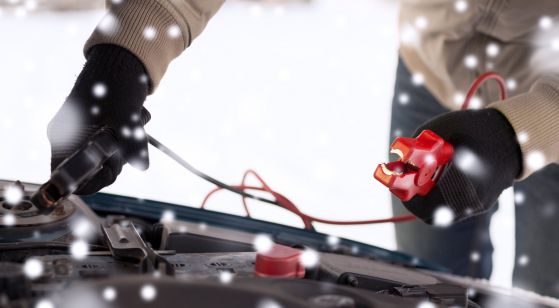
Cold weather is a real test for the car battery. Your car’s battery loses about 33% of its power when the temperature drops below 32 °F (0 °C) and over 50% of its capacity at -4 °F (-20 °C).
Heated seats, electric rear window and side mirror defrosters, wipers, headlights, and all the extra electrical equipment simply “suck” the energy of the battery during the winter. Short-term urban drives are another “hard time” for the battery.
How to help a vehicle’s battery stay alive during the winter?
To avoid staying in the cold weather without a car, the battery should be operated properly. First of all, you need to use as little electricity “suckers” as possible at the same time and avoid short distance driving.
The other important thing is to keep the battery clean and its terminals finely greased.
Why do you have to add water to your car battery? Why does a battery need water?
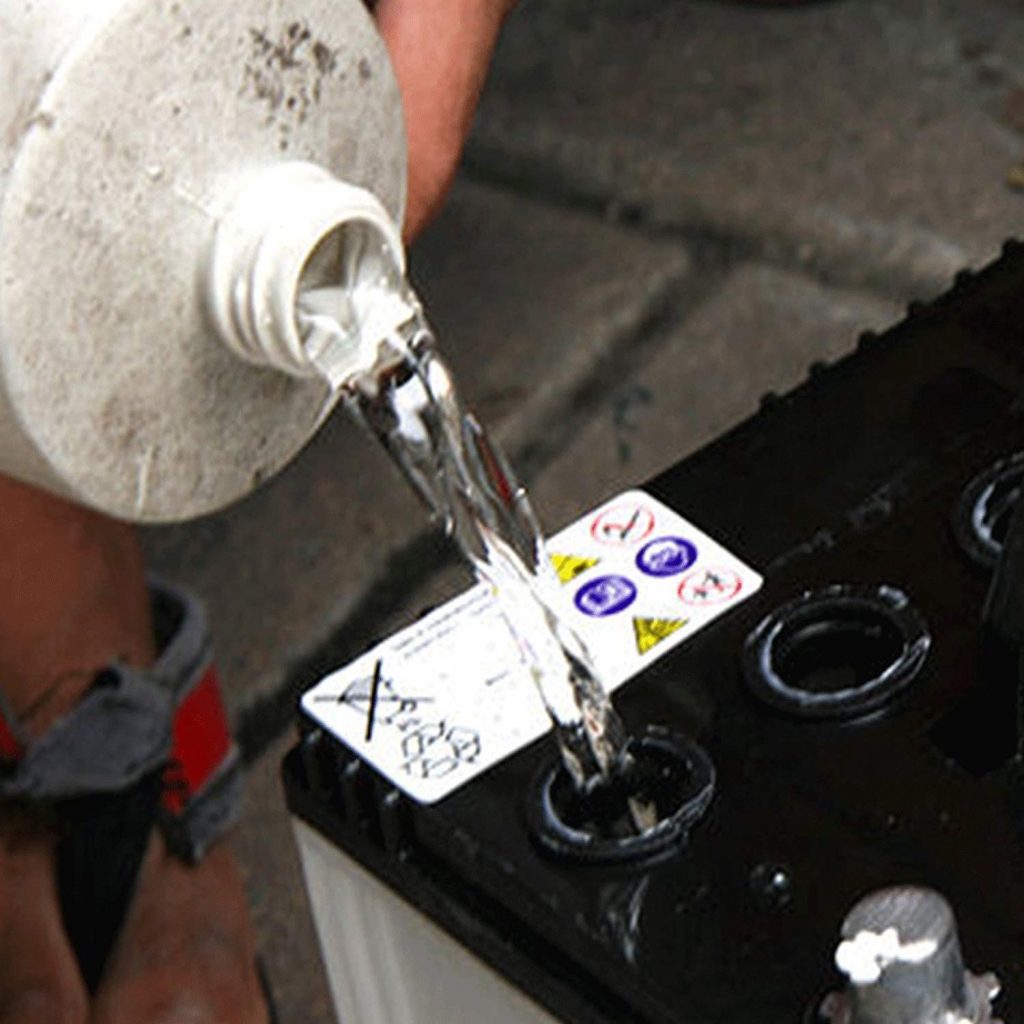
First of all, we need to make it clear that you should NEVER fill your battery with tap water. Only use distilled water.
Second, we need to mention that nowadays the so-called “maintenance-free batteries are taking over which means they are sealed and you can not (and you don’t have to) add any distilled water.
In case you have a conventional lead-acid battery you need to regularly check the level of electrolyte (the liquid inside the battery) once every two weeks and fill it if necessary to the appropriate fill levels.
Under certain circumstances like the normal operation of the car, really hot weather, etc. the electrolyte evaporates to a level which no more covers the plates inside the battery. In order to keep the battery, perform efficiently, distilled water should be added to the appropriate levels.
Can you use tap water in your automobile battery?
No, you can not. Tap water has some minerals which can stick to the plates inside the battery resulting in power loss and decreasing ability to store electricity.
How do you tell if a battery is charged?
There are two simple tests that you can perform in order to be sure your car battery is fully charged.
The first one is by using a multimeter while the engine is running. The battery should be measuring between 13.7 and 14.7 volts.

The second test you can do in case you don’t have a multimeter is by turning on the lights while the engine is running. If they are dim, probably the alternator is not producing enough charge. You can also tell that by revving the engine. If the lights get brighter while revving, this is a sign you have a problem with the battery or alternator.
Do maintenance-free batteries need any maintenance or servicing?
One of the advantages of the maintenance-free batteries is that you do not have to check regularly for the level of the electrolyte inside and add distilled water if need.
But adding distilled water is not the only responsibility when it comes to car battery maintenance.
As already explained above, we suggest checking the power of your car battery at least twice per year. Yes, this counts for the maintenance-free batteries, too. You can do that yourself with a multimeter or you can visit a garage and ask the guys to do that for you. It is a two-minute procedure only.
Another thing that you need to do is clean your battery posts and connectors from any dirt or corrosion with a battery post cleaner or simple wire brush. This sounds very simple and unnecessary, therefore a lot of people neglect it, but maintaining your posts and connectors will prolong the life of your car battery and save you troubles in the long term.
Another thing you need to do with your maintenance-free battery is to check for any obvious signs of damage to the box or any tearing.
Does a maintenance-free battery need water?
Maintenance-free batteries do not need any distilled water to be added.
Will my vehicle battery be fully discharged if I do not drive my car regularly?
Yes, car batteries have a certain self-discharge rate which can completely discharge them if the car is not driven for a long time or driven for short start-stop trips. Furthermore, all modern cars are full of electronics that require a certain amount of power and drain the battery even when the vehicle is not running.
Some car batteries have a lower discharge rate but that doesn’t prevent them from complete discharging over long periods of time.
The best way to keep your battery properly charged and ready for the next trip after a long vacation is by connecting it to a maintenance charger.
Should I disconnect my auto battery terminals if I am not going to drive my vehicle for a long time?
While with the old cars we could simply disconnect the car battery and then connect it after a couple of months without any issues, this is not the case with modern cars.
Modern cars are full of electronics that need some amount of power even when the car is not running. These electronic systems do not like to stay without power for longer periods of time. Disconnecting the battery of your modern car may cause certain systems to fail next time you start your vehicle.
The best solution when leaving your modern car for a long vacation or for the entire winter is to connect it to a maintenance charger. It can stay connected for an indefinite amount of time.
How long does it take to charge an automotive battery while driving after a complete flattering?
A car battery will recharge by driving only if its general state of health is good. Short start-stop trips, or idling the engine are not the proper way to charge your battery.
A continuous drive of at least 30 minutes may properly recharge your car’s battery ONLY if it is still in a very good condition.
If we assume that your battery already has a year or two under the hood, the only proper way to recharge is by connecting to a battery charger.
Conclusion
Car batteries are an important part of your car. Choose wisely and make sure to pick a reputable brand with a dependable warranty.
We encourage you not to go for the cheapest units as usually, they end up being the most expensive in the long term.
Choosing the best car battery is not the only factor if you want a long life of the battery and if you want to save yourself from unpleasant situations. Once you have a reliable battery it is important to take proper care of it.
Thank you for reading our review. We will be glad to hear your comments below!

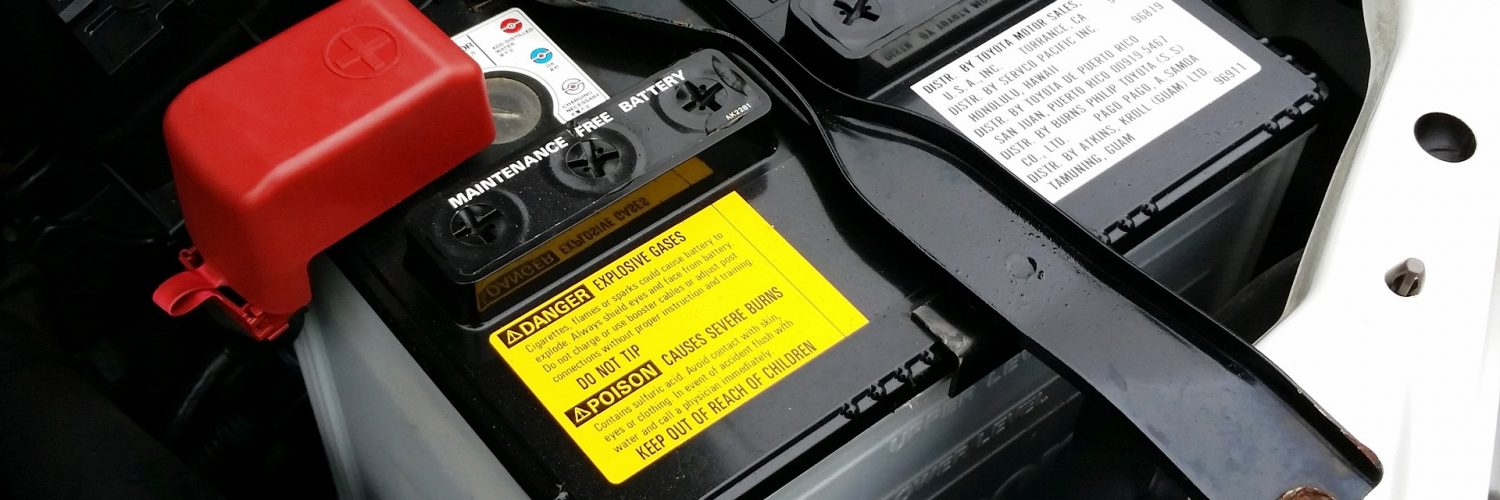
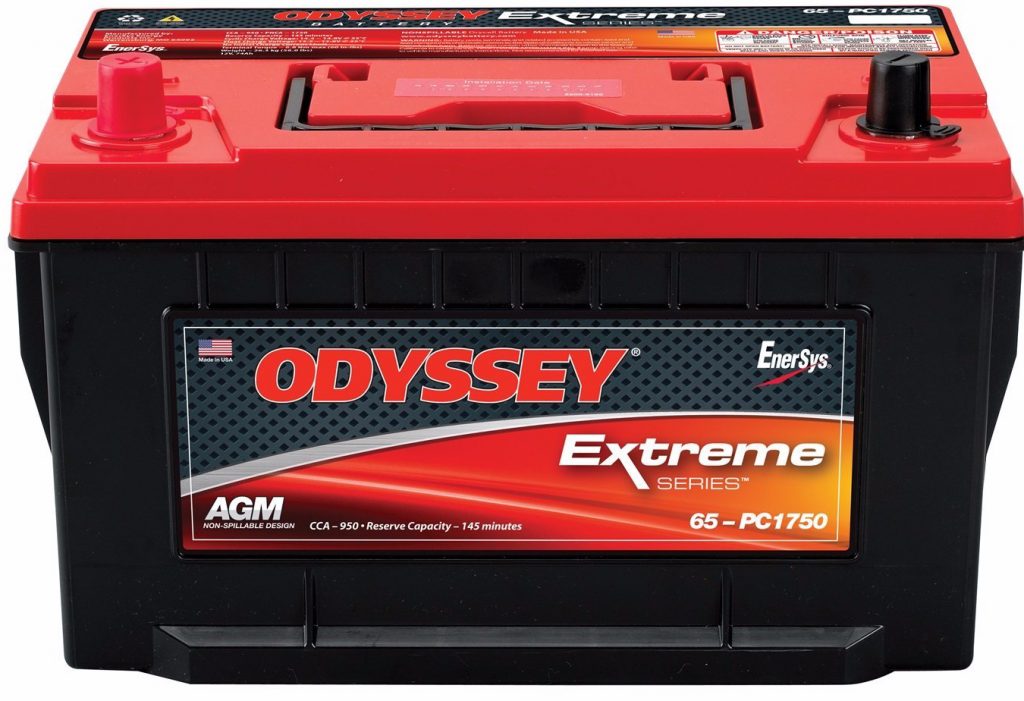
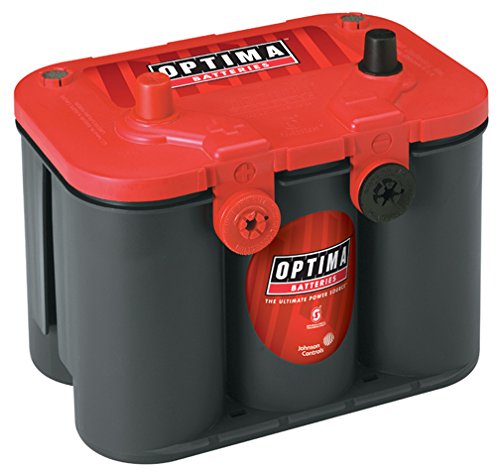
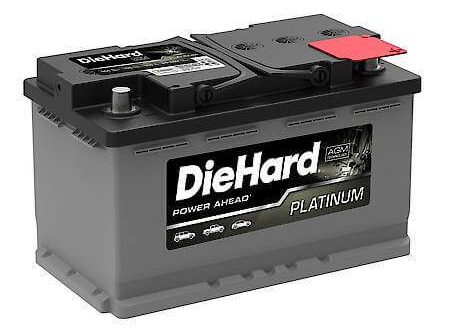

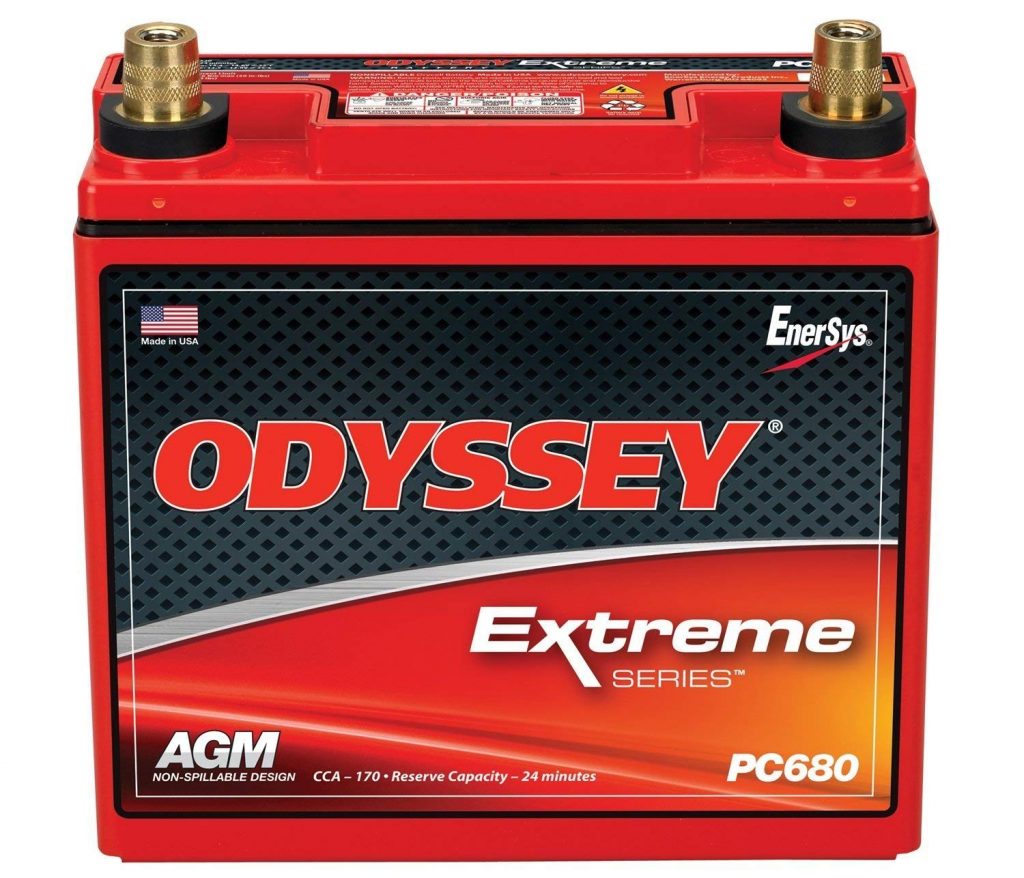

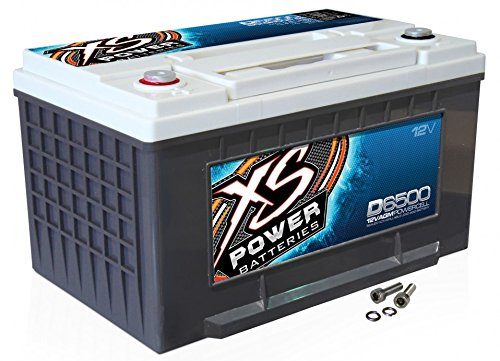
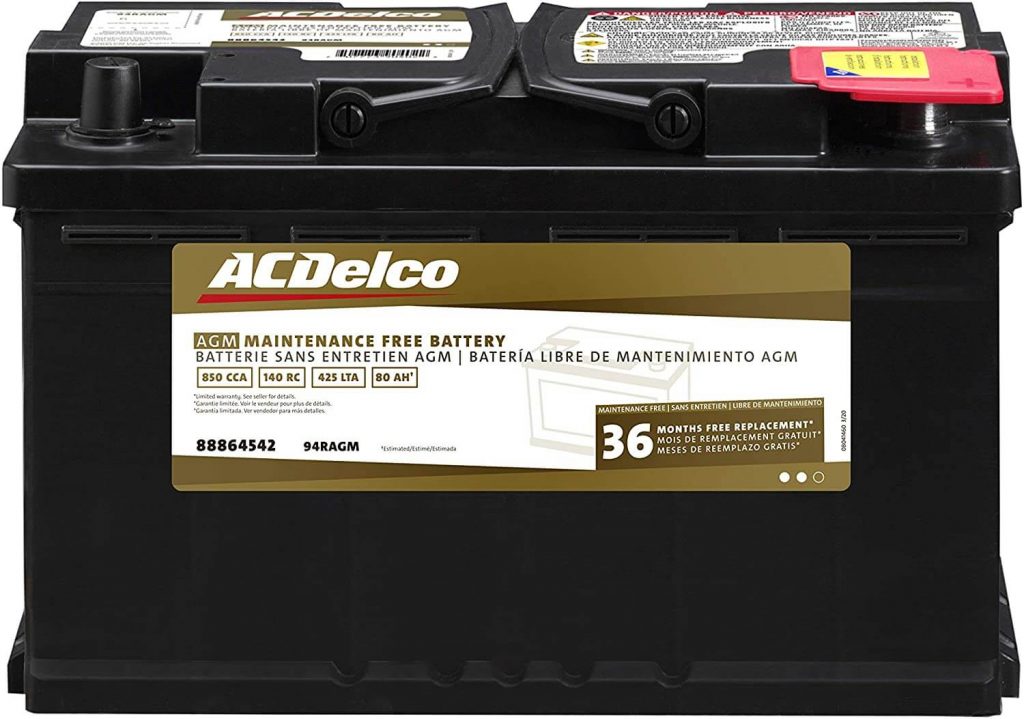


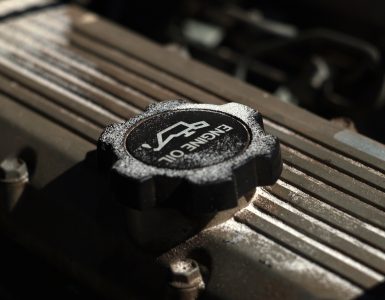















in this pandemic era, the most problematic component is battery. being the vehicle is not used of many days, the batteries could have stooped working. it would be helpful th check or service the battery before starting the vehicle for the first time after the pandemic.